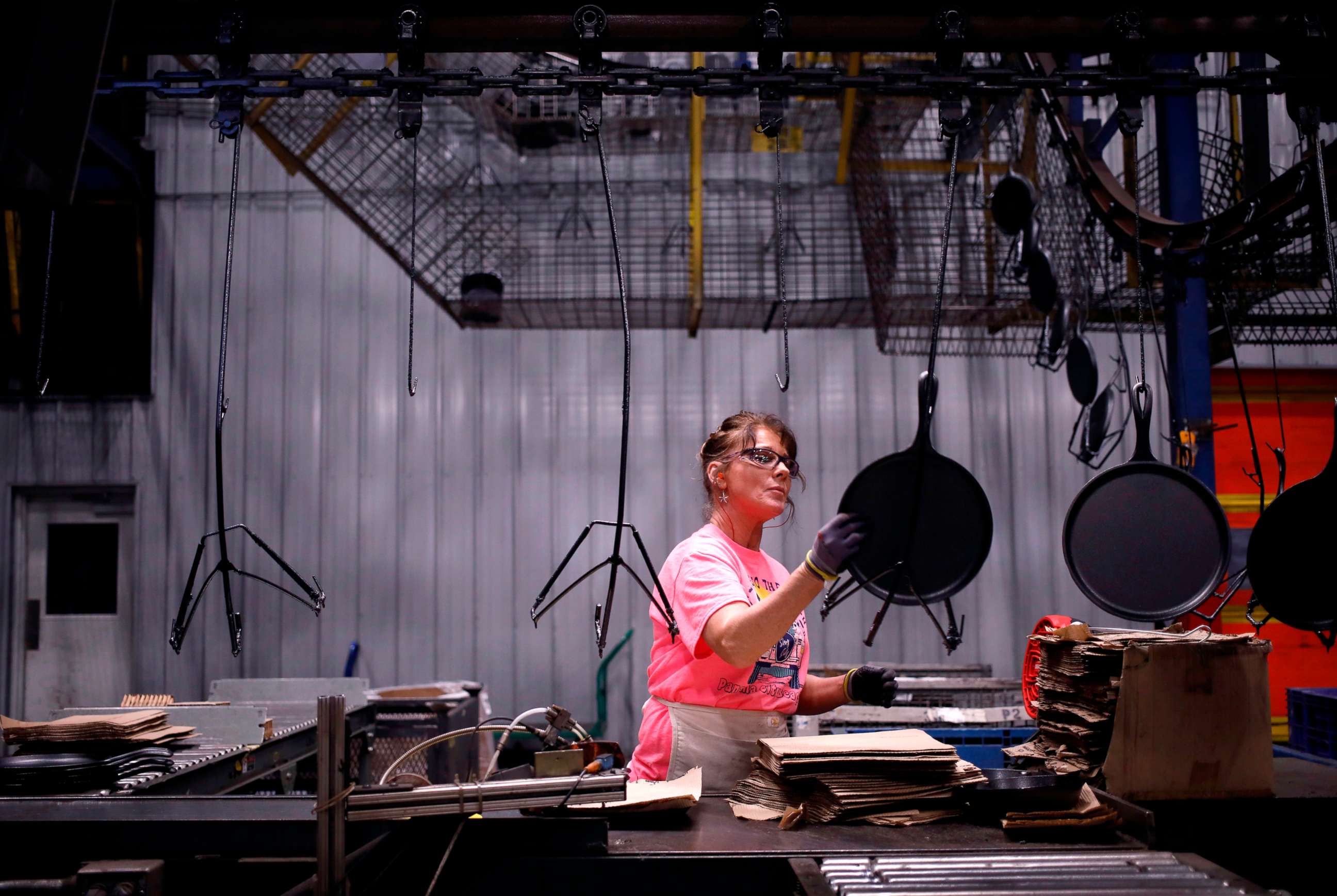What's behind rise of women in US manufacturing amid industry revival?
A surge of women in the manufacturing industry in recent years has punctured the stereotypes of who is working in American factories, data shows.
During the 2010s, the share of women in the manufacturing industry grew among all age groups, according to a Census Bureau analysis released on Monday. The representation of women dipped during the early months of the pandemic but rose back up toward pre-pandemic levels last year, the analysis showed.
Despite their progress, women make up only about 30% of manufacturing workers, according to Census Data.
The surge of women in the field has coincided with a revival for the industry overall. As of August, the manufacturing sector had added 461,000 jobs in 2022, putting the industry hundreds of thousands of jobs above where it stood before the pandemic-induced recession.
The inroads for women in the industry can partly be attributed to the attractive pay and benefits in manufacturing as well as the industry's shift toward automation, which has generated jobs that require more education and less heavy lifting, experts told ABC News. But the industry's male-dominated culture remains a barrier to women, they said.

Here are two reasons why the share of women in the manufacturing industry has grown, according to experts:
Manufacturing jobs pay well
A key reason for the growth of women in manufacturing stems from strong compensation in the industry, especially when compared with sectors typically associated with women, such as care and service work, said Tameshia Bridges-Manfield, vice president of Workforce Innovation at Jobs for the Future, a nonprofit organization focused on equitable economic advancement.
"Wages are significantly higher," Bridges-Manfield told ABC News. "Women are looking at their options and what's available."
The average annual wage in production occupations, which range from auto manufacturing to oil and gas extraction, stands at $43,070, according to Bureau of Labor statistics data. By comparison, the average yearly wage for waiters and waitresses is $29,010, the data showed.
Jessica Deming, an organizer with The International Association of Machinists and Aerospace Workers, a labor union, spent seven years working at a Boeing plant in Portland, Oregon before leaving in June.
Prior to joining Boeing, Deming worked as both a bartender and a front desk manager at a hotel, earning a total of roughly $40,000 a year, she said. Within a year of working at Boeing, Deming made $30 per hour, which amounts to about $62,000 per year, she said. At the end of her tenure at Boeing, she made $47 per hour or nearly $100,000 per year, she said.
"As women in manufacturing, we were told a lie and a truth," Deming told ABC News. "We were told being a machinist is really, really hard and women can't do it. The truth is it's really hard and the lie is women can't do it."
"As women are being more empowered, they realize they are being sold a bill of goods," she added. "They realize the opportunities that lay before them."
Shift to skilled manufacturing
Another reason behind the growth of women in manufacturing is the growth of automation in the industry, which has given rise to some jobs that require higher education and incur less physical strain, experts said.
"Too many Americans think of manufacturing as something of yesteryear," Carolyn Lee, the president and executive director of the Manufacturing Institute, told ABC News. "It's not dingy, dark and dangerous. It's full of technology and opportunities for collaboration."

Perception of the manufacturing industry is catching up to the changes, studies show. Sixty-four percent of consumers view manufacturing as innovative, an increase from 39% of respondents five years ago, according to a study released by Deloitte in March.
A further revival of the manufacturing sector could add $1.5 million jobs to the economy, with most of those jobs concentrated at the middle-skill level, a McKinsey study in August found
"Manufacturing jobs look different – it's not the dirty, dark shop floor," Bridges-Manfield said. "The exposure to manufacturing and what it is in 2022 may make it more appealing to women and girls in the long term."




